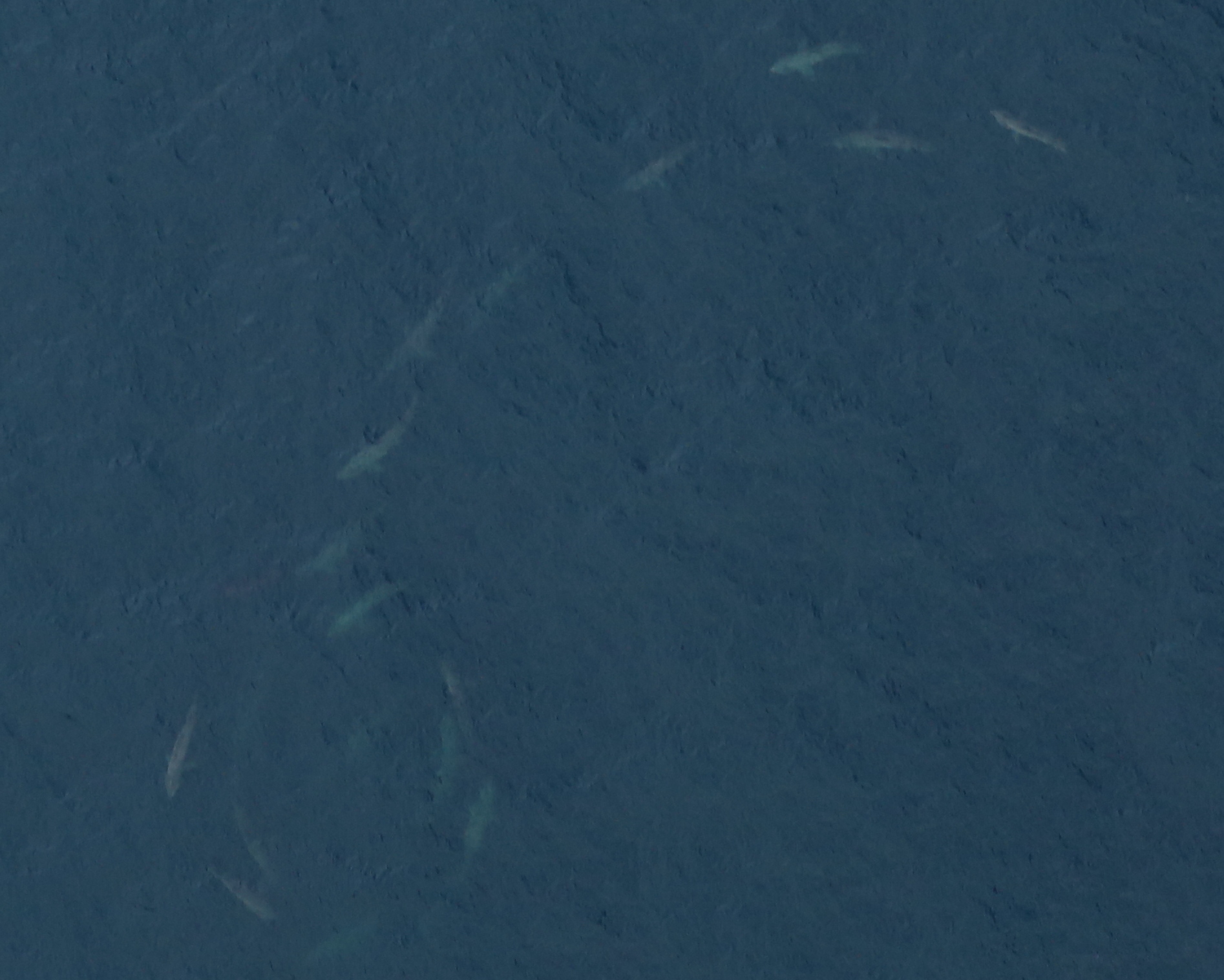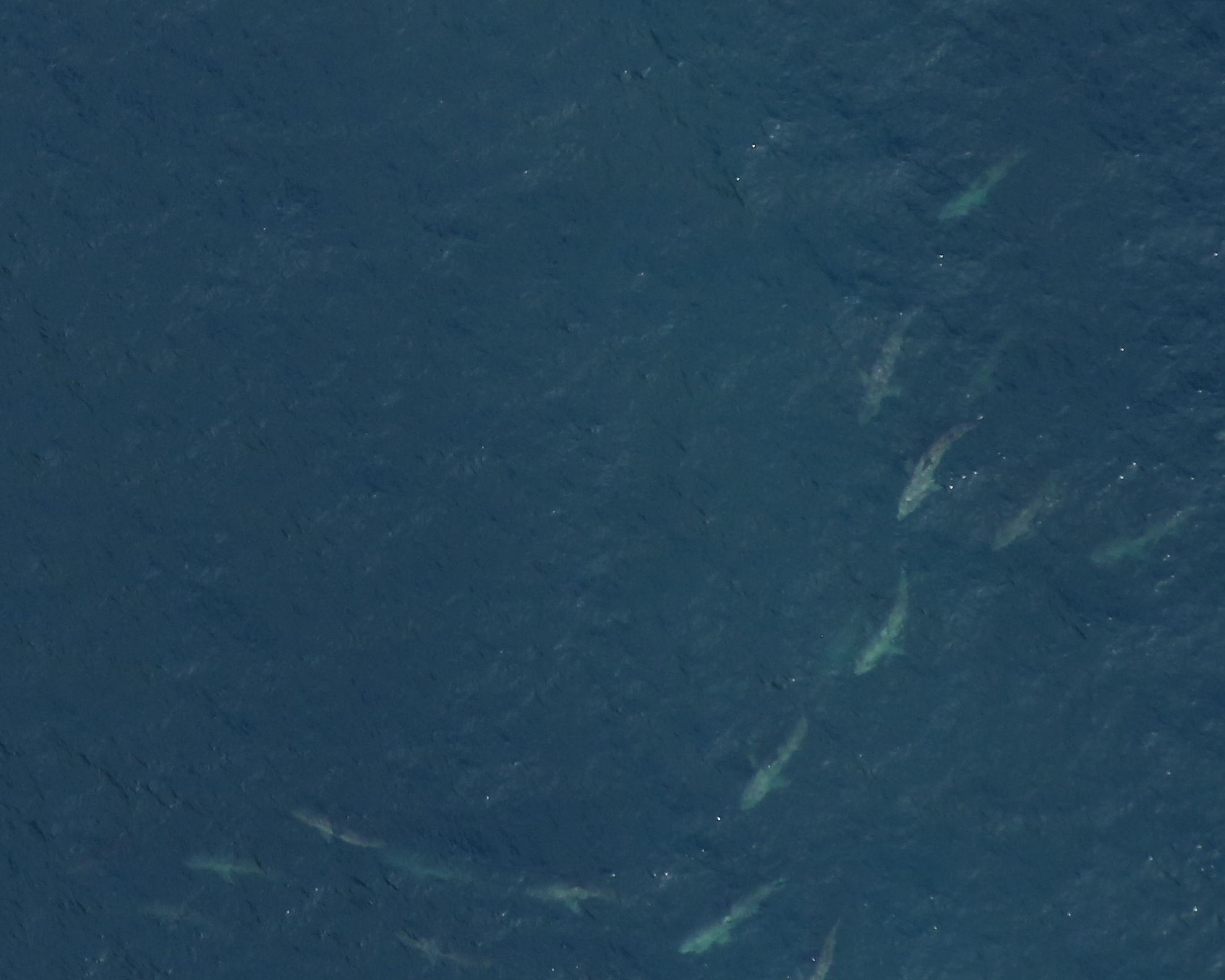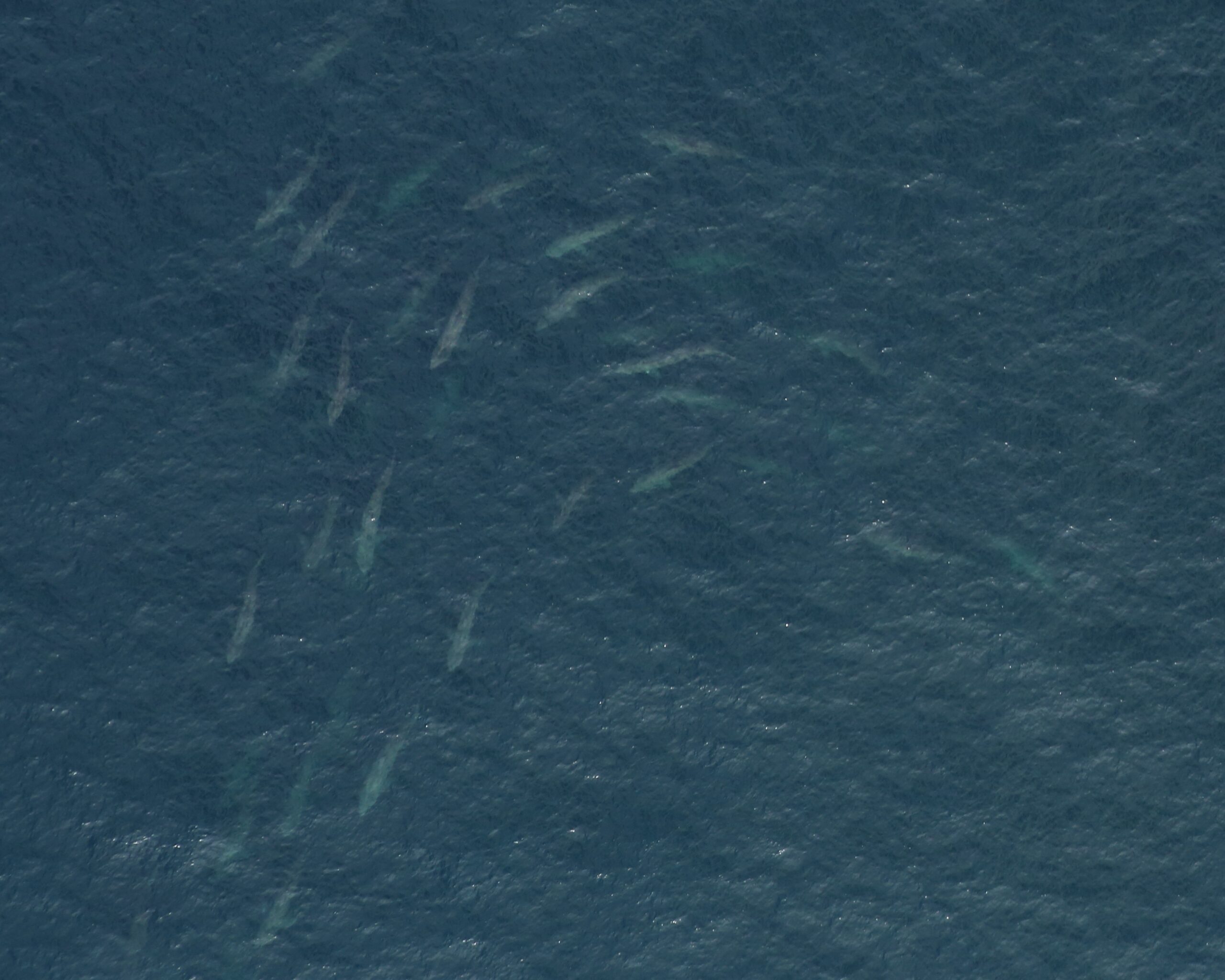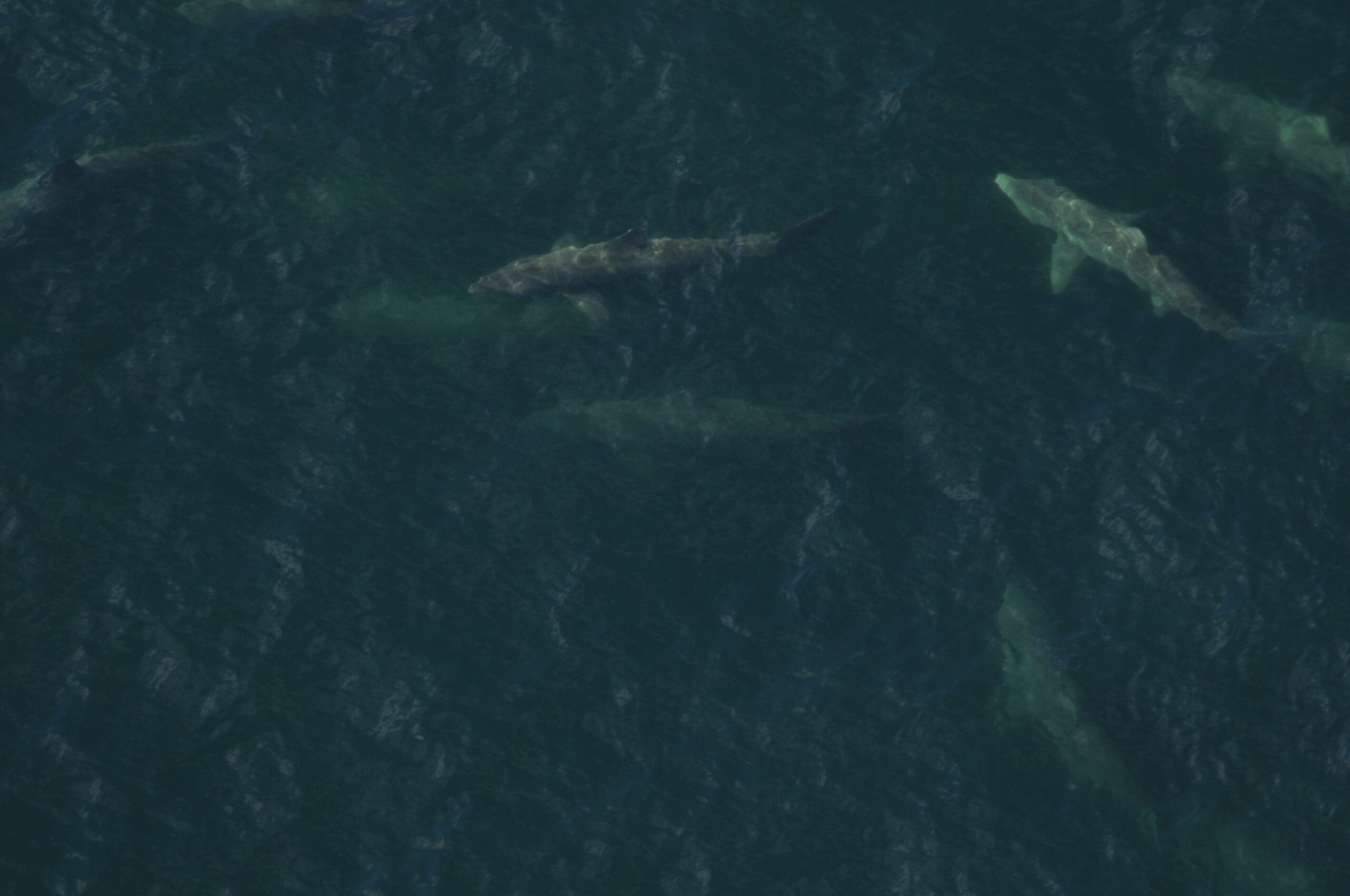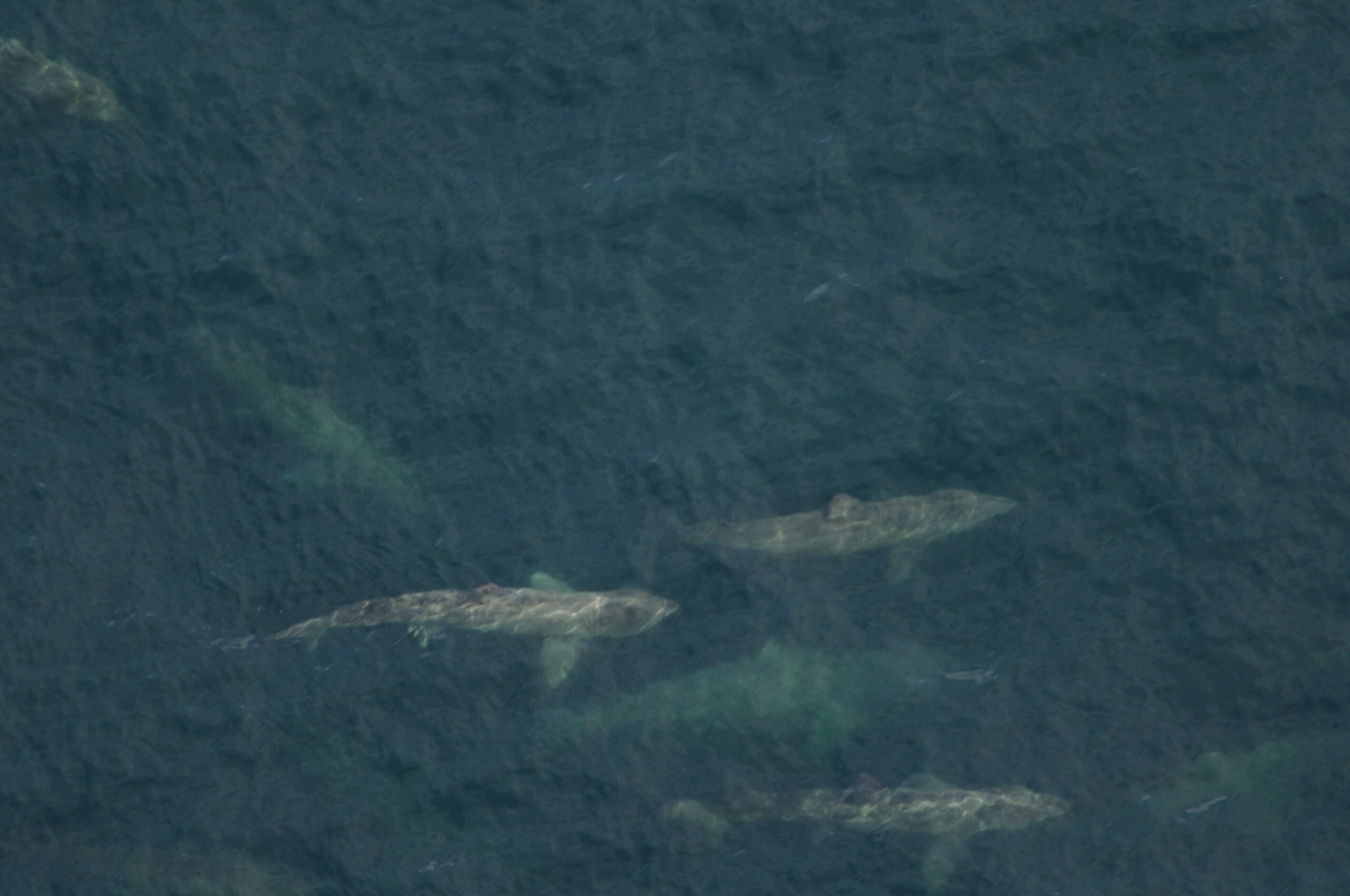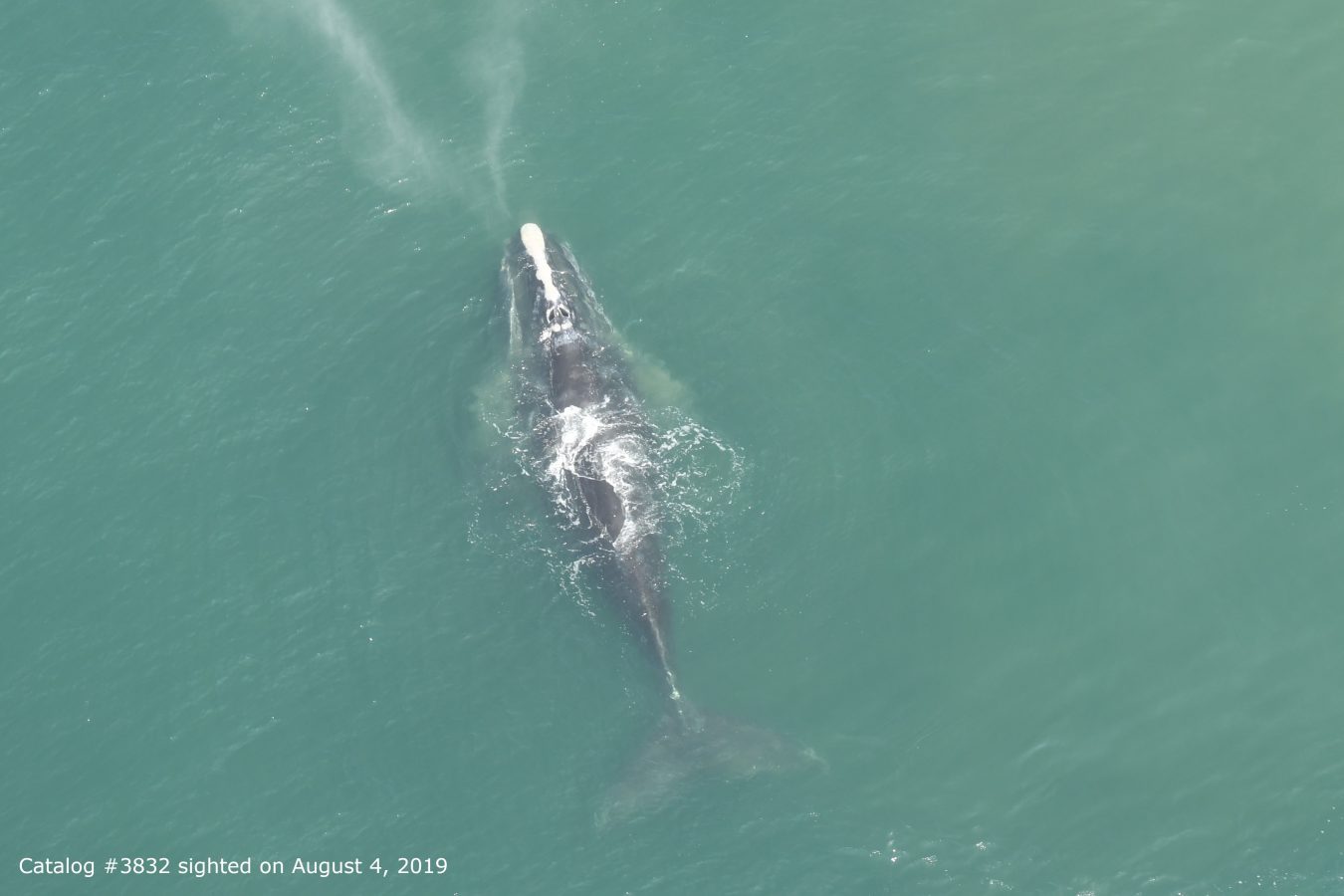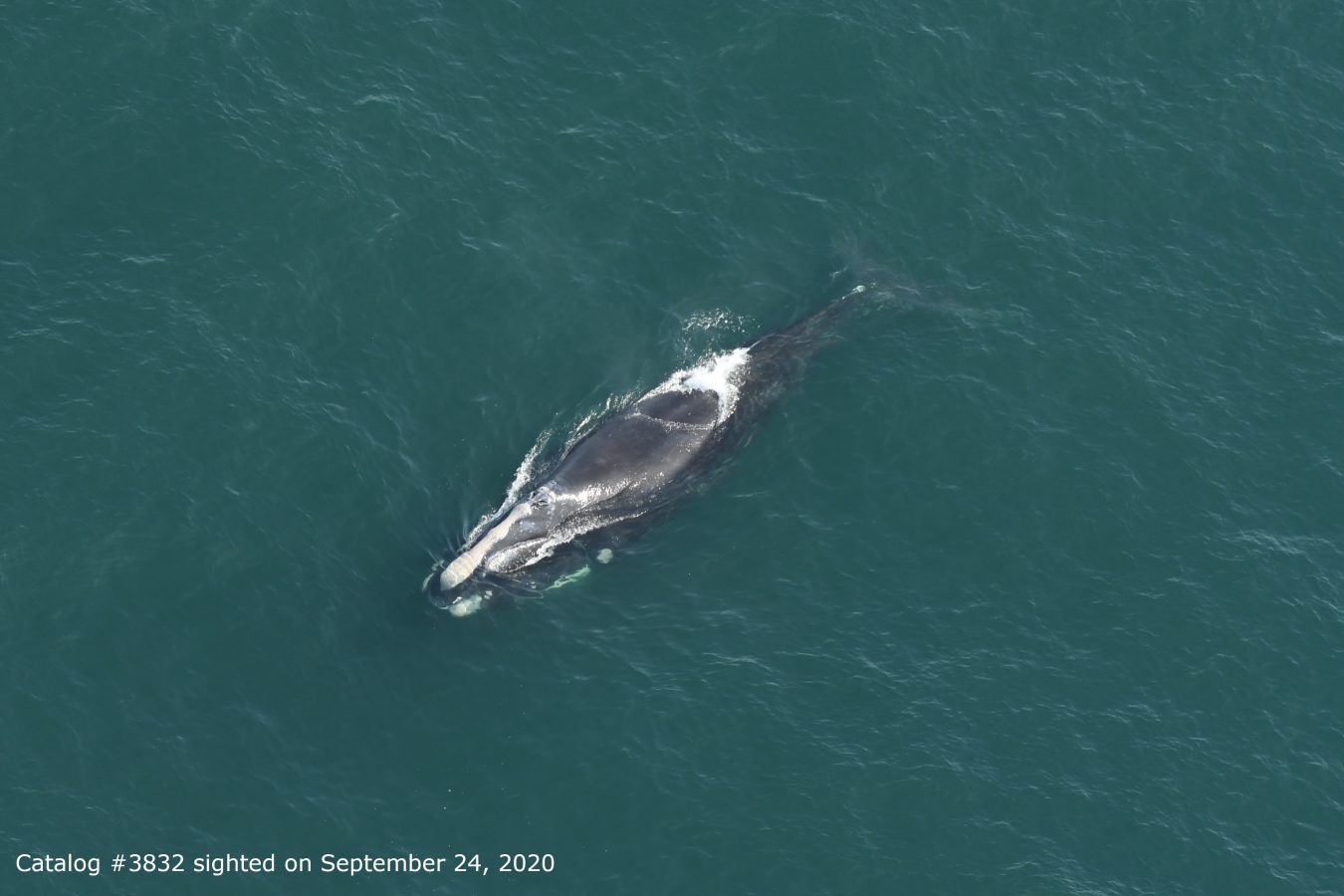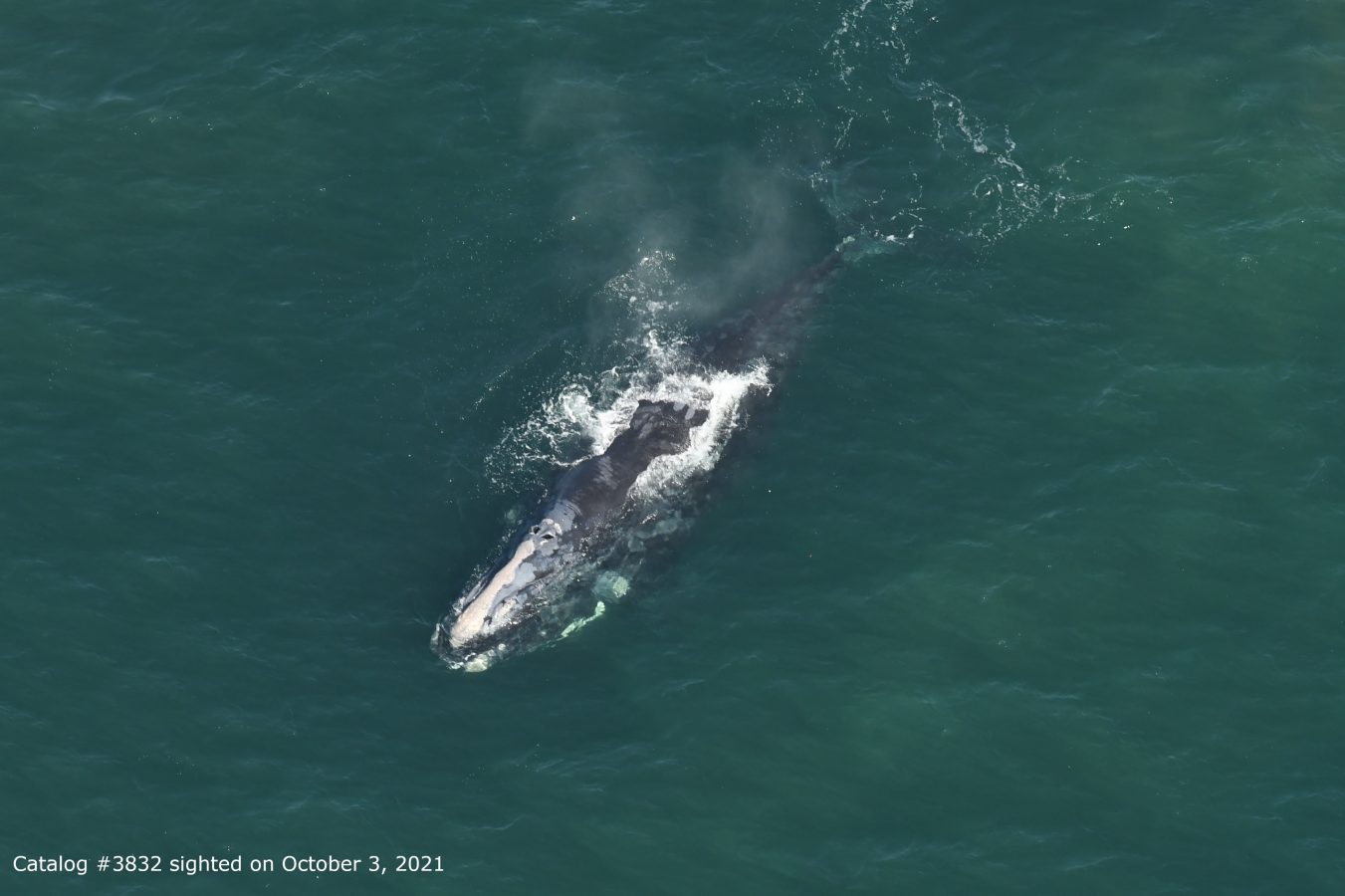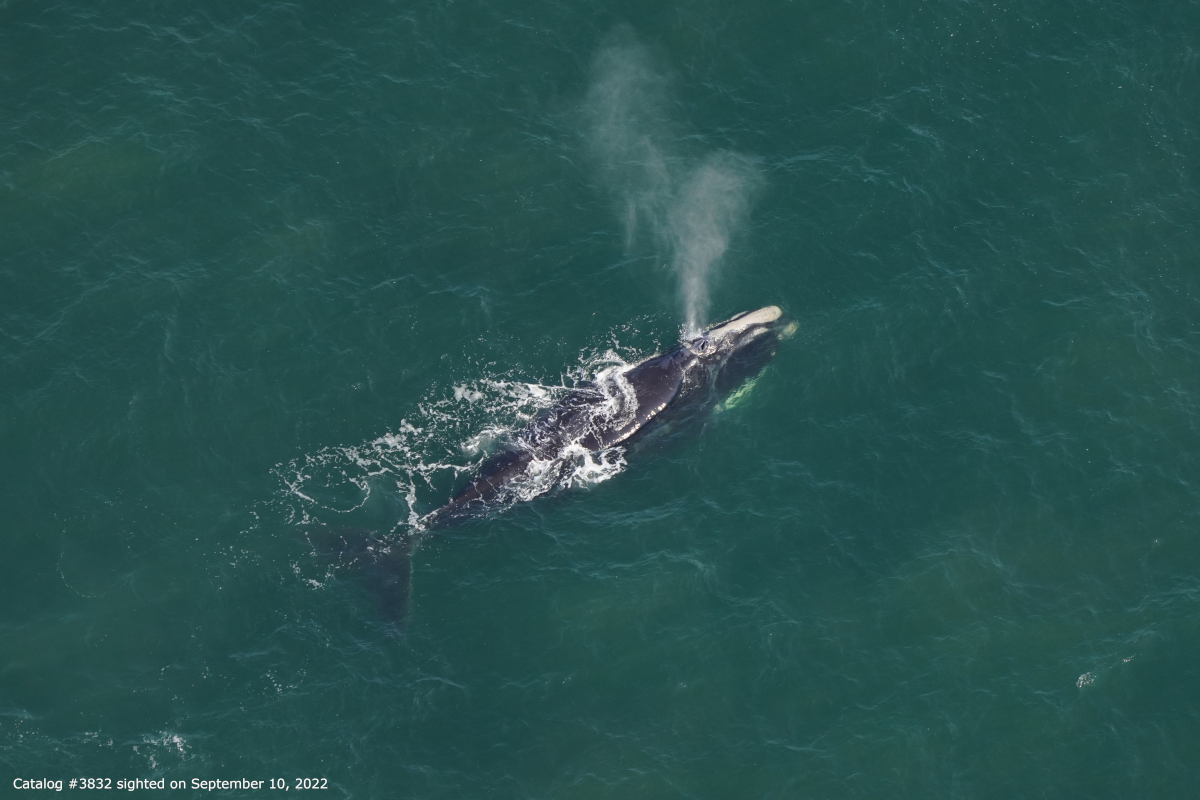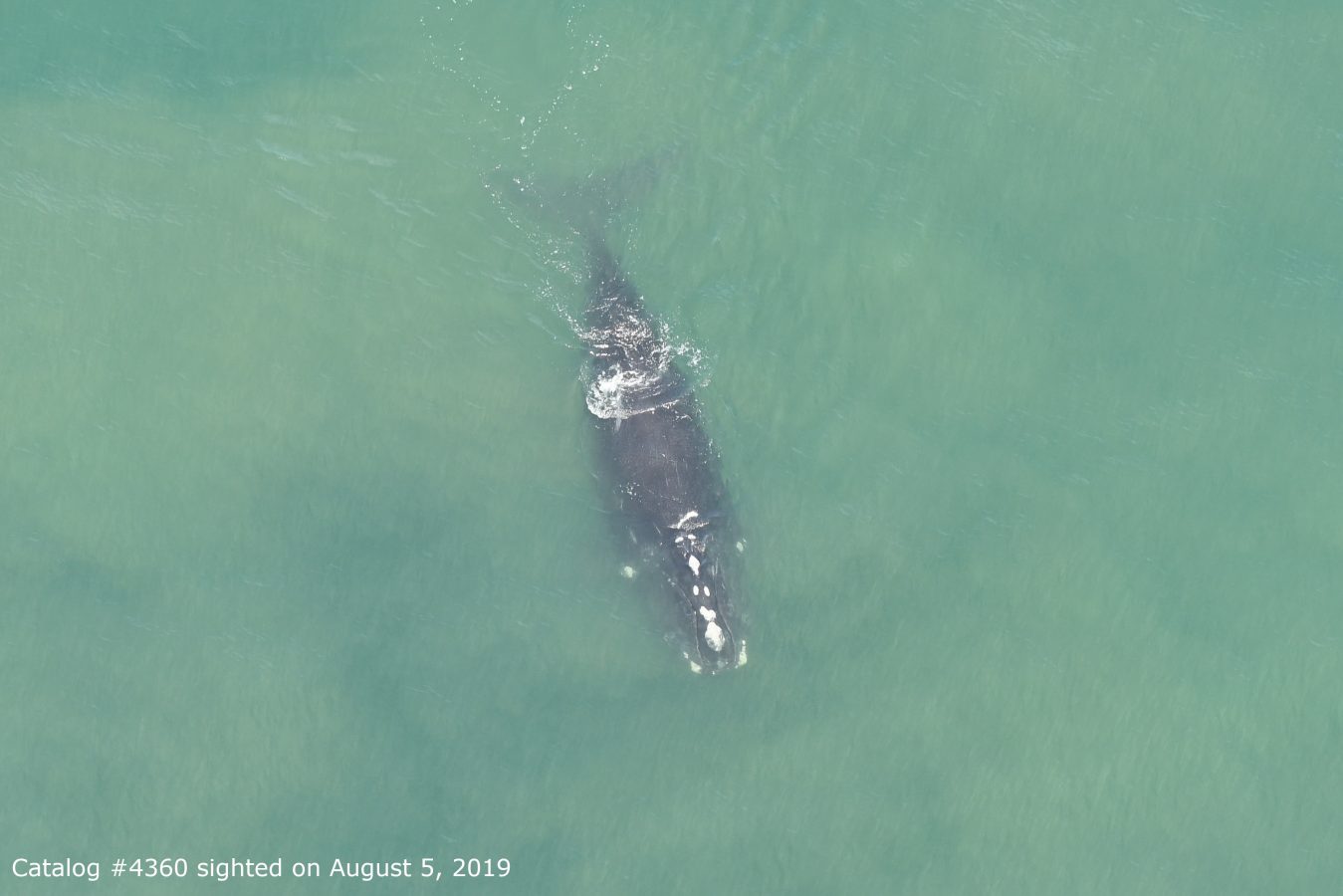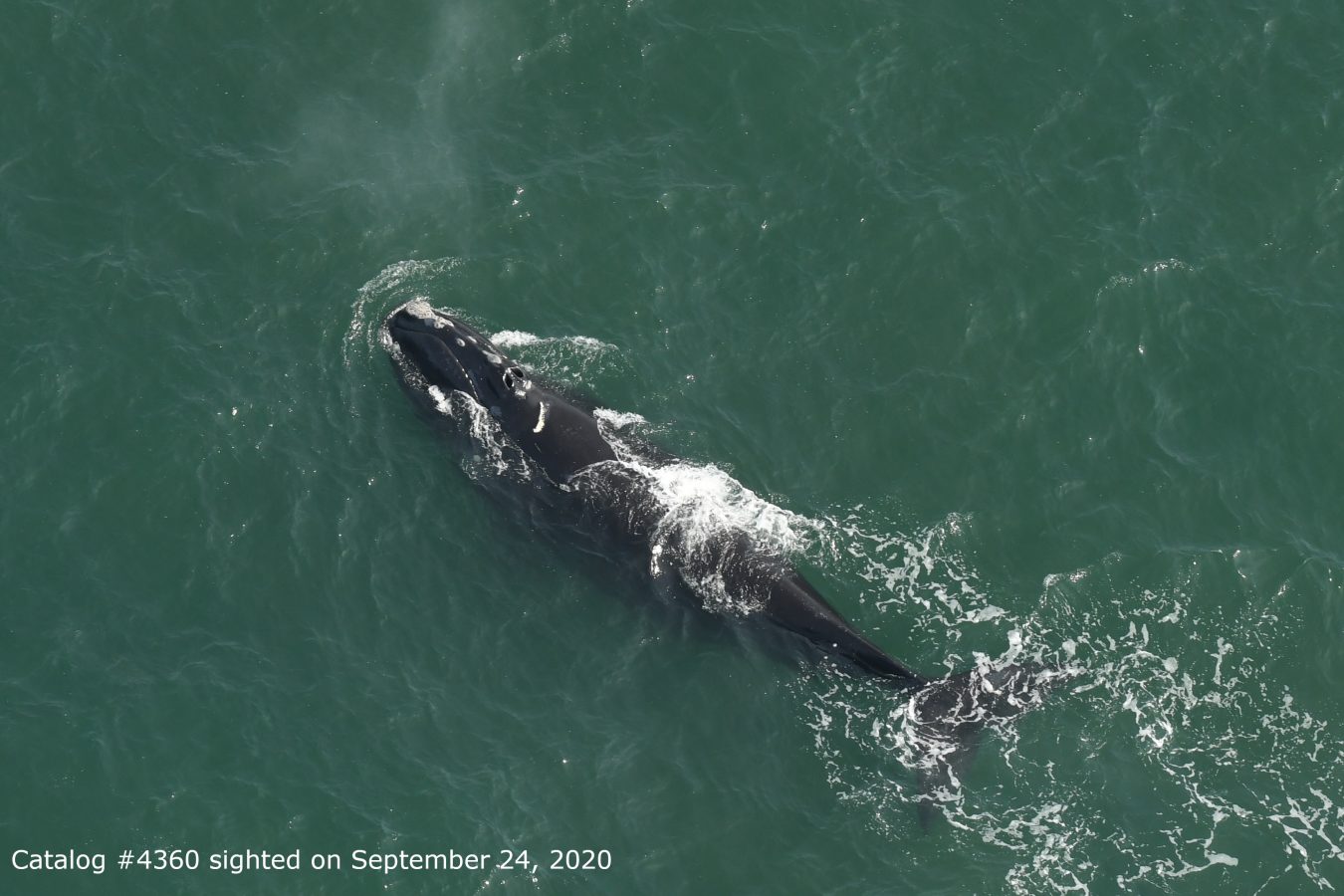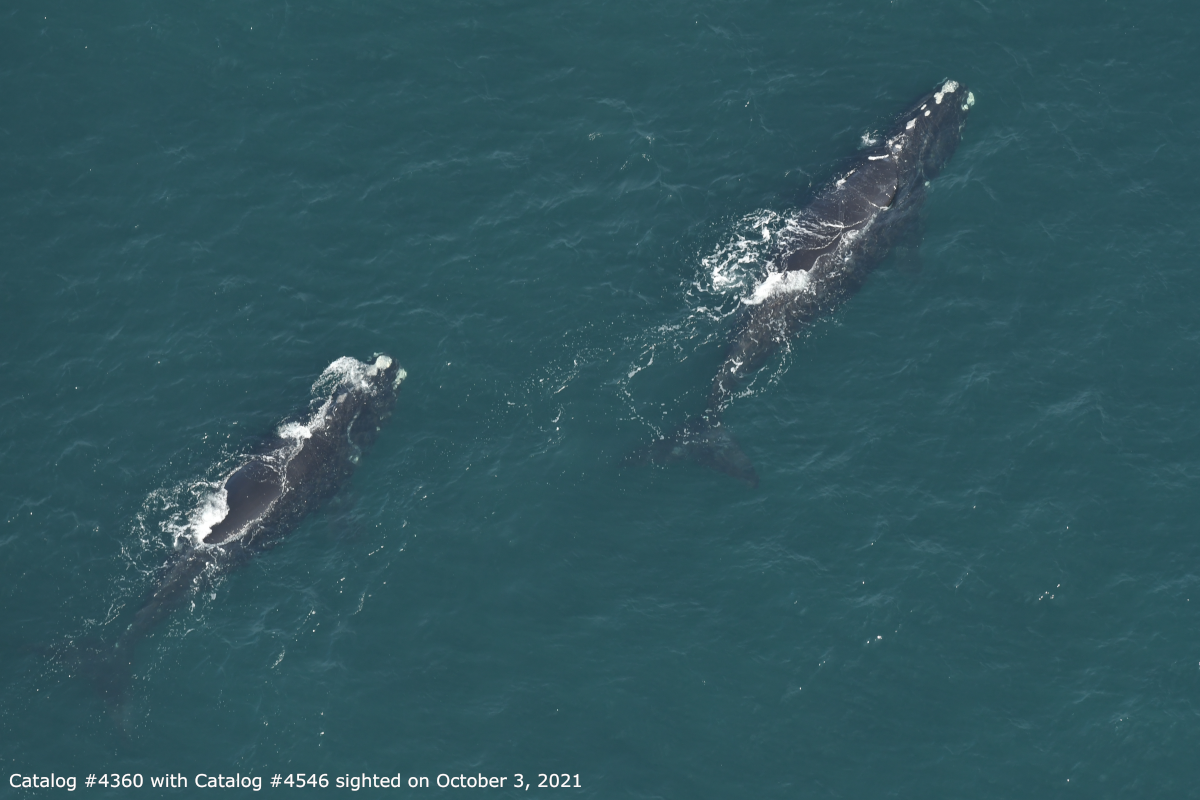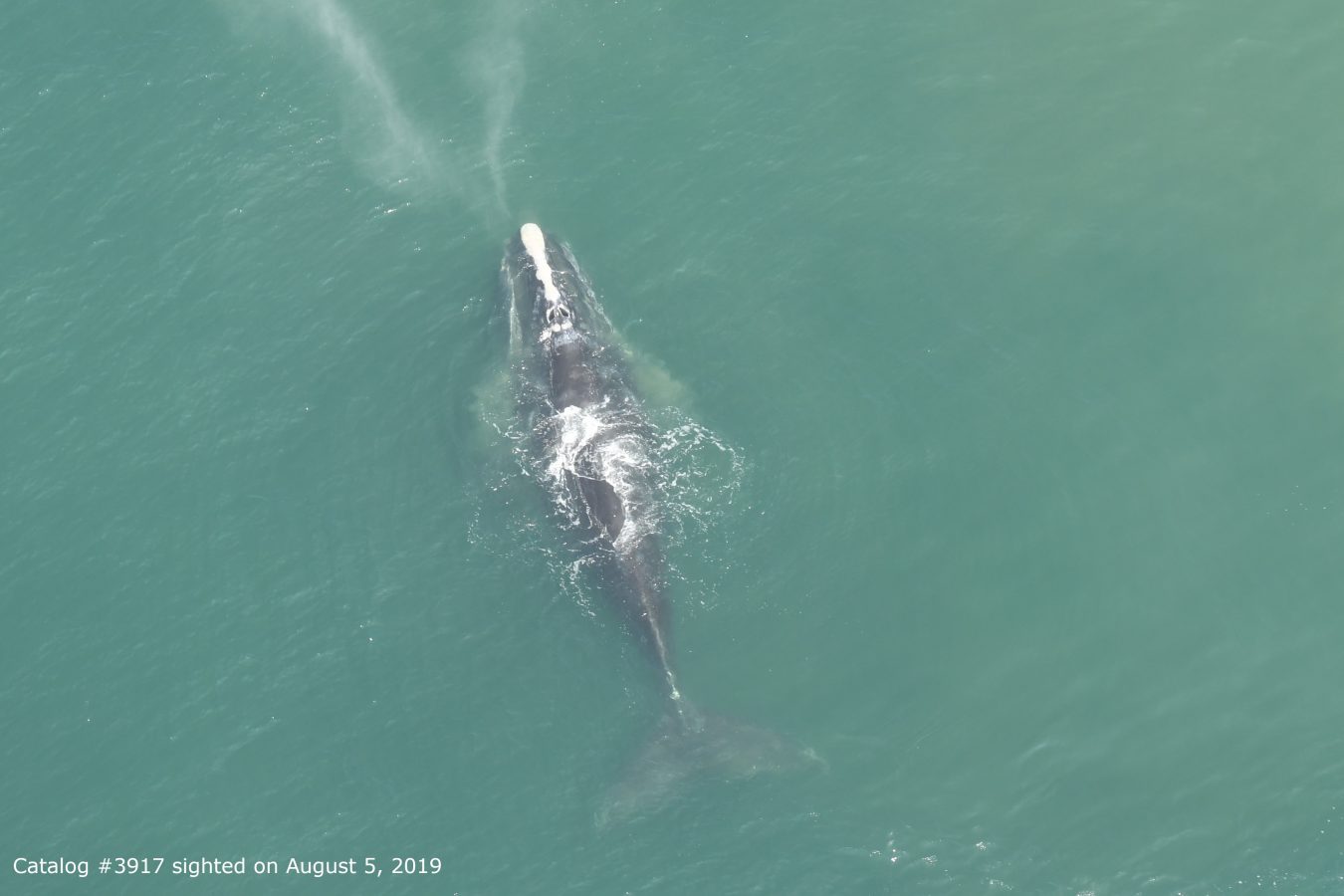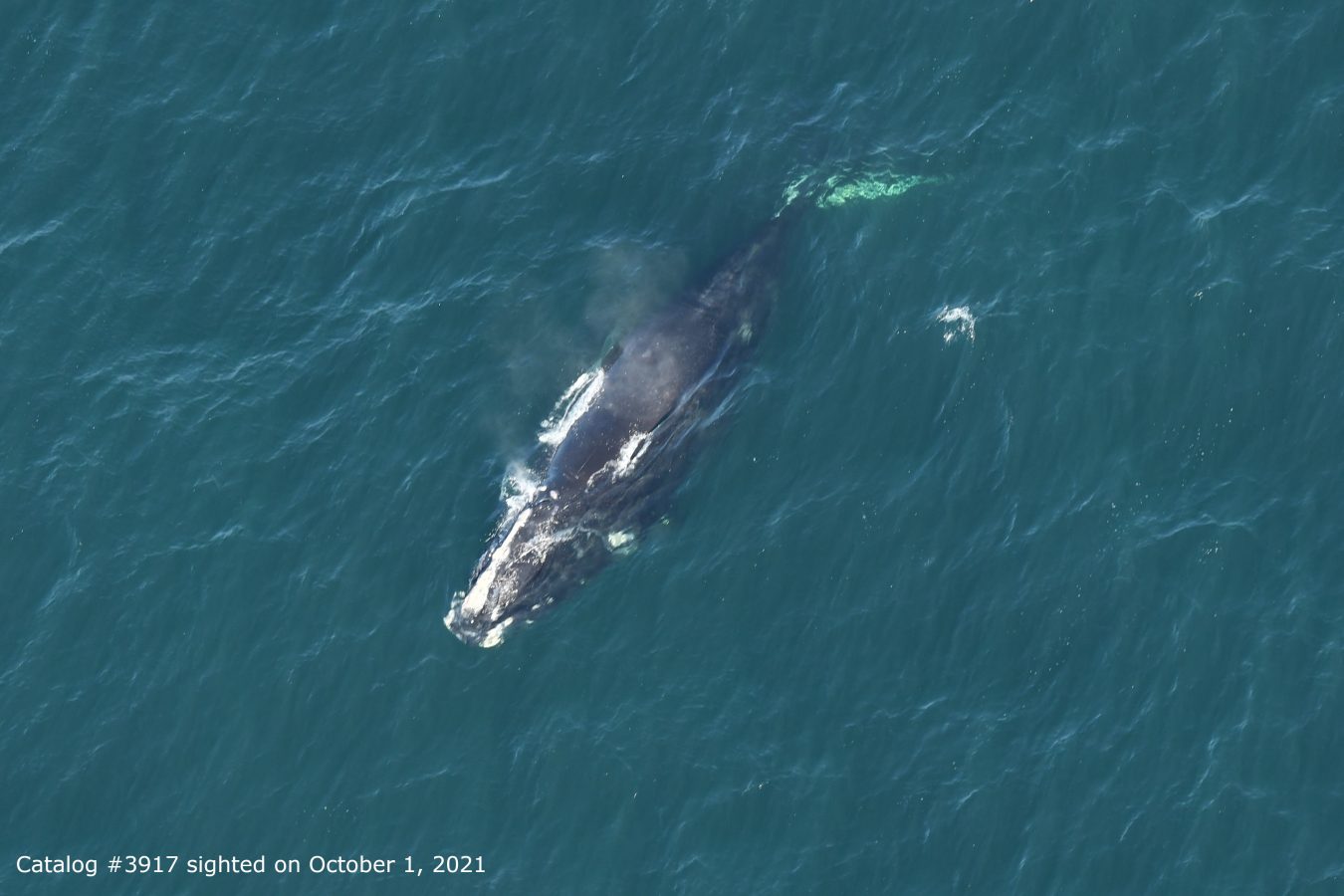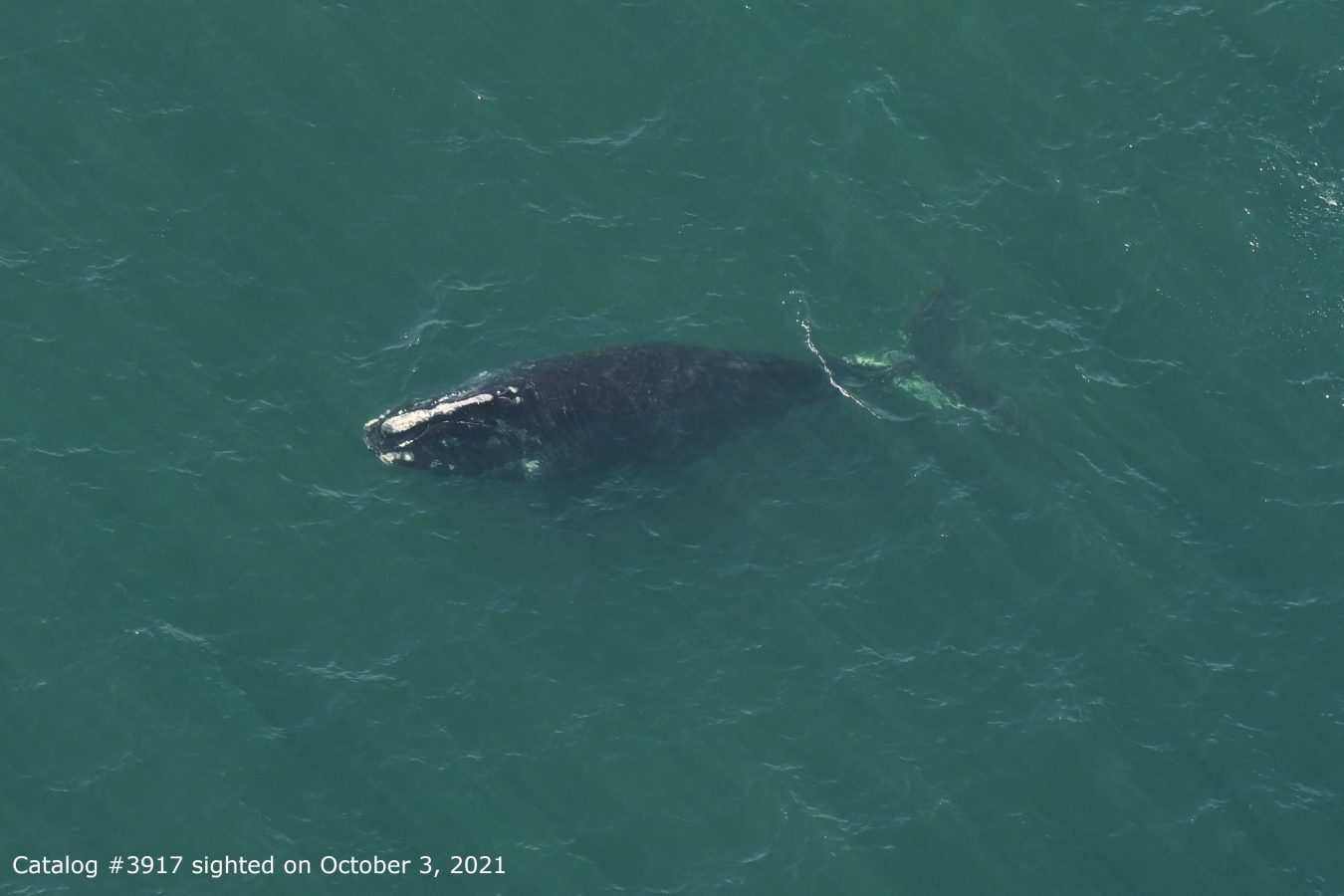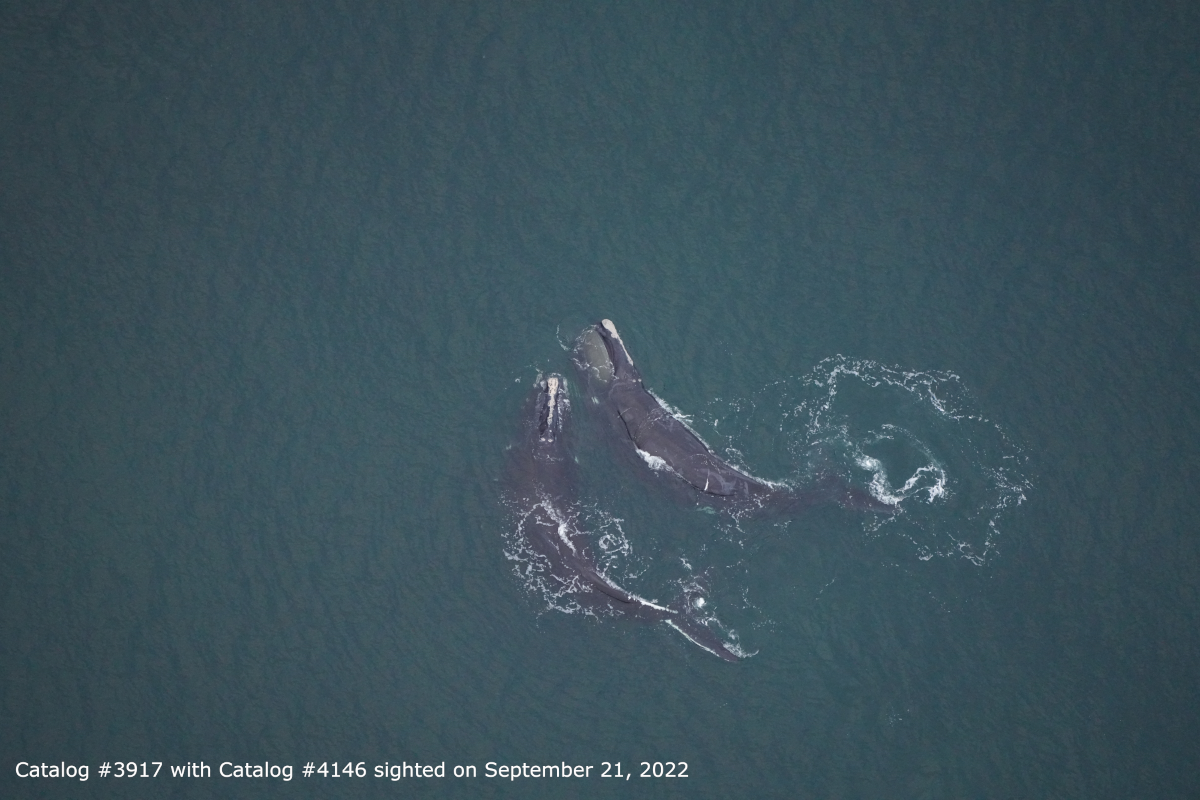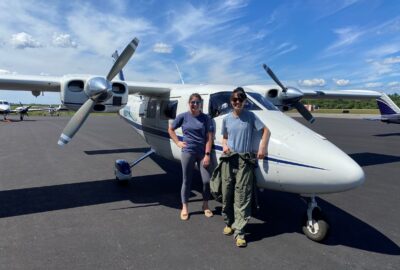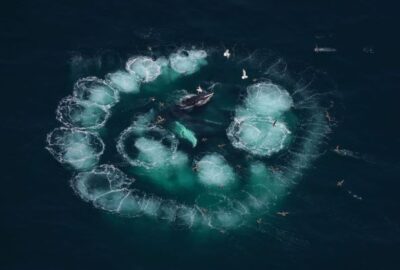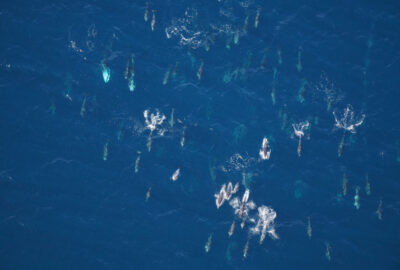Fall Aerial Survey Sightings
By New England Aquarium on Wednesday, November 16, 2022


(Updated December 12, 2022)
For many people, fall in New England conjures up images of change: leaves changing from green to red and gold, and summer humidity falling away to cooler and drier weather. For our aerial observers, this theme of change is also evident in our fall surveys. As summer transitions to fall, we begin to notice changes in whale distributions in our survey area as well as in the number of shark sightings.
Learn more about our fall aerial survey sightings below!
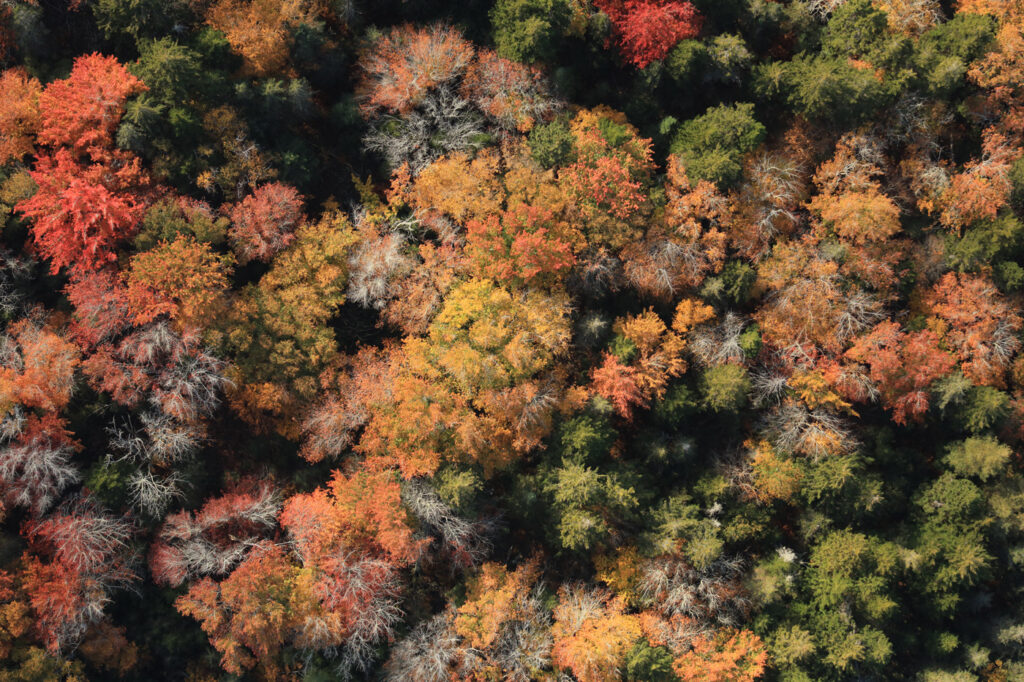
Are We Swimming in Circles?
Spotting Cartwheeling Sharks from the Survey Plane
In an earlier fall update, we mentioned that as the weather cools, we generally see fewer sharks on survey. The most abundant sharks we have seen in the past few summers have been blue sharks and hammerhead sharks. We used to see a lot of basking sharks in the summer too, but recently our basking shark sightings have been higher in the spring and fall. Some research suggests that basking sharks target a specific water temperature window throughout the year, so it’s possible that these sharks are heading farther north in the summer as New England waters warm, either as a direct consequence of warming waters, or in response to changing prey distributions. We have only noticed the drop in summer basking shark sightings recently, so we can’t say if it’s a new pattern or perhaps just a temporary occurrence!
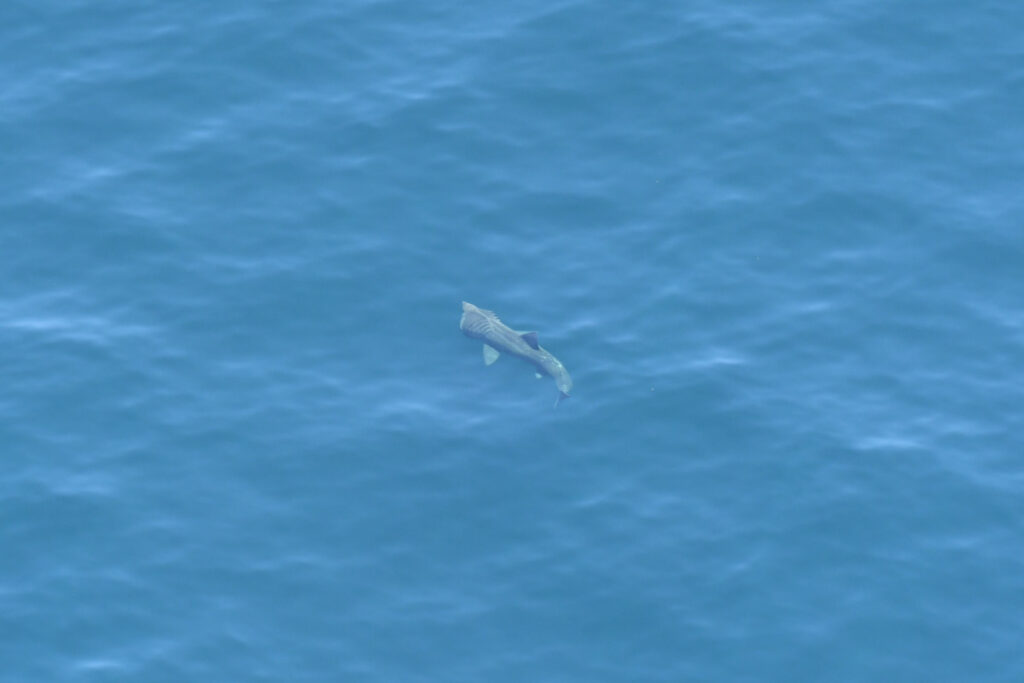
This year, on one of our fall flights, we spotted several groups of basking sharks doing something really unusual: each group of sharks was in a cartwheel formation.
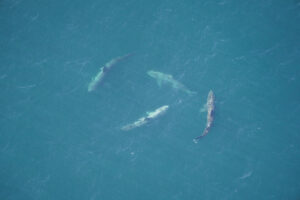
Usually, we see basking sharks swimming alone, so this was quite surprising. This experience reminded us of another basking shark sighting the aerial team had many years ago!
On November 5, 2013, the aerial team spotted an aggregation of ~ 1,400 basking sharks 50 miles southwest of Martha’s Vineyard. The sharks were spread out in compact groups over an area of about seven square miles. Within each subgroup, the sharks were observed in cartwheel formations, echelon patterns (think “V” patterns of flying geese), nose-to-tail swimming, parallel swimming, and breaching. These aggregations are a known but not commonly seen basking shark behavior: Their function still remains a mystery, although it is thought that food resources could draw the sharks together, and they then engage in courtship behavior.
/
Seeing a group of sharks this large was a momentous occasion, which is why it sticks in our minds almost ten years later! Recording this unique behavior, whether it is four sharks or 1,400, is part of the critical work our aerial surveys do to better understand the marine species in New England.
/
The Return of Some Familiar Faces
Aquarium aerial surveys have documented right whales in Southern New England in the winter and spring since 2011, and more recently (since 2017) in the fall. In the past few years, we have noticed several individuals consistently return to the Nantucket Shoals area year after year to feed and socialize. As we move into our fall survey season, we always look forward to seeing some familiar whales and this year we have already seen some of our regulars!
Some notable whales from this group of regular fall visitors include Catalog #4360 (“Musketeer”), Catalog #3832, and Catalog #3917, who have all been seen in Southern New England at least three of the last four fall seasons. The majority of the individuals that we’ve seen in the Nantucket Shoals in the late summer and fall have rarely been seen outside of Southern New England waters in recent years during this season. For example, all 17 sightings of #3832 since 2018 have been in the Nantucket Shoals and all 30 sightings of #4360 since 2017 have been seen in Massachusetts waters, particularly Southern New England during the summer and fall. This highlights the importance of the Southern New England habitat to some whales and how mysterious their movements can be between sightings.
Although we typically see males in the fall, over the last two fall seasons we have started documenting more females in the area such as Catalog #4041 (“Cassiopeia”) and Catalog #3802 (“Portato”). Some of these whales began using the Southern New England habitat in the fall as juveniles, so it is exciting to see them continue to frequent this area even as adults!
The strong preference that some individuals have for Southern New England makes it a habitat that is critically important for monitoring right whale individual health and population status. While some of the right whales seen this fall will migrate down to the southeast U.S. in the coming months, we expect that others will remain in the New England area and feed throughout the winter and into the spring. Stay tuned for more updates!
New England Aquarium aerial surveys are currently sponsored by MassCEC, BOEM, and NOAA. Right whale photos taken by the New England Aquarium aerial survey team under NMFS permits #19674 and #25739.
/
Fall Ch-Ch-Changes: It’s Not Just the Leaves…
Changing Whale and Shark Sightings from Summer to Fall
By Sharon Hsu
This summer, we observed many humpback whales bubble-feeding south of Martha’s Vineyard. In fact, we documented an aggregation of over twenty humpbacks in this area. However, as the fall months of September, October, and November approach, we usually begin to see a shift of humpback presence away from Martha’s Vineyard and toward Nantucket Shoals, an area also utilized by right whales during this time. Here, we no longer see the same humpback bubble-feeding behavior that’s common in the summer. Instead, both humpbacks and right whales are likely subsurface feeding and can be found in close proximity to one another. Occasionally we are surprised by how closely they overlap, as the two species are typically thought to feed on different prey. In fact, on a September survey, we saw a humpback surface right next to a small group of right whales!
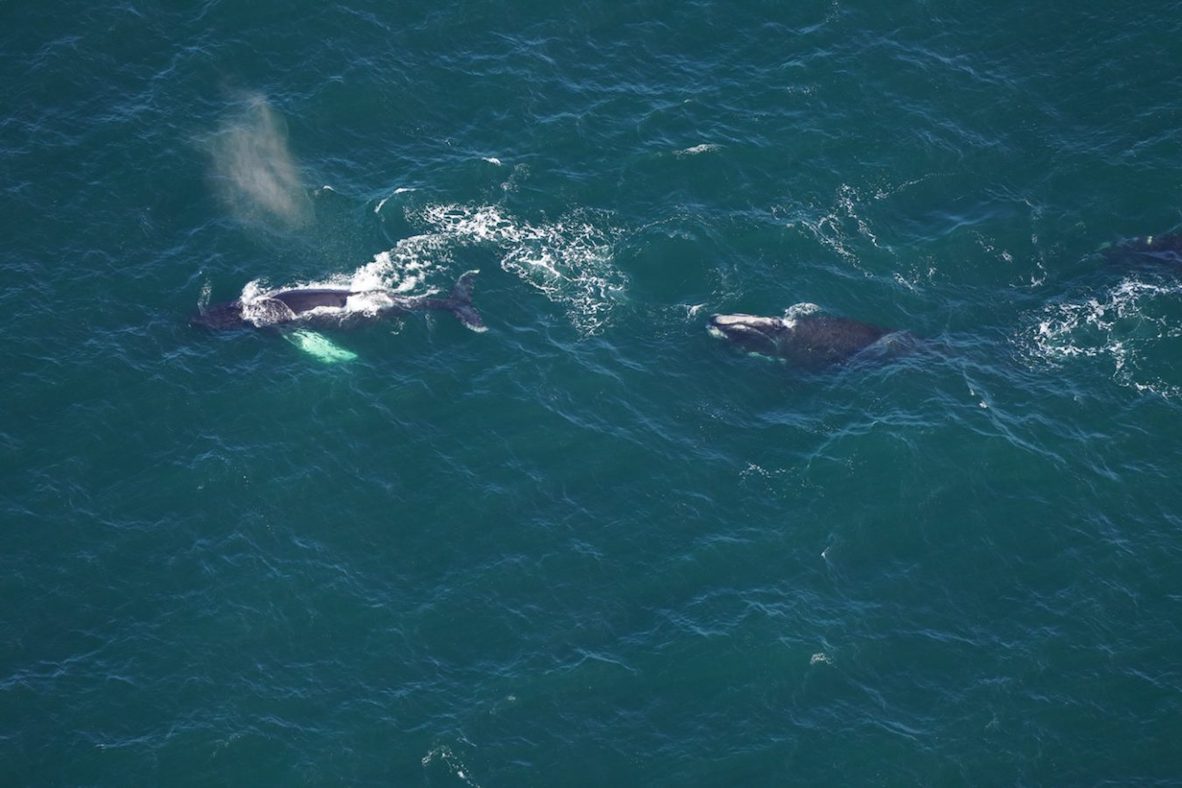
But whales aren’t the only ones to show summer-to-fall changes! Each summer, shark sightings become more frequent off Martha’s Vineyard and Nantucket. The most common summer sharks we see are blue sharks, and in more recent years, hammerhead sharks—likely brought in by warmer waters. This past summer, we sighted 77 blue sharks and 95 hammerhead sharks! However, as fall approaches and the temperatures begin to decrease, we also notice a decrease in shark sightings. In the summer, we also sighted 18 basking sharks—the second-largest shark species—however, we usually see more of these sharks in the cooler shoulder seasons along their migratory routes. Stay tuned for a more detailed basking shark observation and other fall aerial survey updates!

